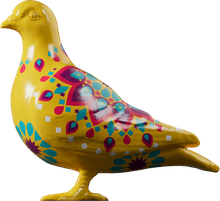Post-Medieval — 1600-1699; 17th century; early 18th century
Tortoiseshell Casket
A late 17th century, Louis XIV style, rectangular veneered tortoiseshell (dyed red) casket on lobed-bracket feet with ormolu mounts. The domed cover has a recessed rectangular panel with moulded borders in the centre of which is an oval ormolu mount cast in relief of a bird among foliage, the corners with conforming mounts, the front with a matching ormolu escutcheon. The steel key survives. There is a mirror on the inside of the lid and the compartmentalised interior is lined with red (now faded to pink) velvet.
Veneered tortoiseshell caskets of this type were made in the Low Countries, principally Antwerp, the leading centre of the trade but also in Paris, France. Specialist workshops were established and the archives of the Antwerp based firms of Forchoudt and Musson provide evidence for 17th century production and trade networks. The applied panels on the casket are fashioned from ormolu, a method of mercurial gilding known as ormolu, in which a solution of mercuric nitrate is applied to copper, brass, or bronze; followed by the application of an amalgam of gold and mercury. The item is then exposed to extreme heat until the mercury vaporizes and the gold remains, adhering to the metal substrate.
- Category:
- Post-Medieval
- Object ID:
- A7031/1
- Object name:
- Tortoiseshell Casket
- Object type:
- Artist/Maker:
- —
- Related people:
- Related events:
- Related places:
- Production date:
- 1600-1699; 17th century; early 18th century
- Material:
tortoiseshell, ormolu, silk, wood, steel, glass
- Measurements/duration:
- L 203 mm, H 134 mm, W 275 mm (overall)
- Part of:
- —
- On display:
- —
- Record quality:
- 100%
- Part of this object:
- —
- Owner Status & Credit:
Permanent collection
- Copyright holder:
digital image © London Museum
- Image credit:
- —
- Creative commons usage:
- —
- License this image:
To license this image for commercial use, please contact the London Museum Picture Library.

